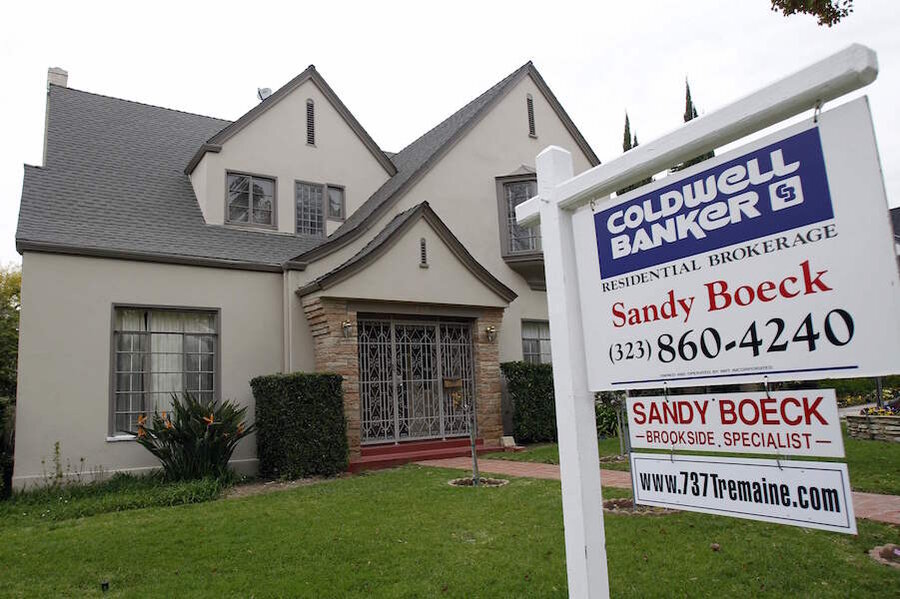Thinking of buying? The real cost of owning a home.
Loading...
Owning a home means you can blow out a wall to create a more spacious kitchen or paint your bedroom a flaming fuchsia — things that are certainly deposit-forfeiting and likely eviction-motivating offenses in rental land.
Let’s say you want to buy your own place, but you want to know if it’s really a good idea for you right now. When the buy-vs.-rent issue comes up, consider the basics first and then drill down.
Adding up the costs of homeownership
The basics begin with your monthly payment. To make it an apples-to-apples comparison, you’ll need to compare your rent payment to monthly homeownership costs. Because those include more than just the principal and interest portion of a mortgage payment, typical mortgage payment calculators can be a bit misleading.
You also need to estimate property taxes and homeowners insurance, as well as other potential costs. These can include private mortgage insurance, homeowner association dues and condo or common community fees. A real-life home affordability tool can be a big help with this task.
Other costs to factor in include:
- Loan closing costs, which typically amount to 3% to 5% of the value of your loan. This covers everything from a professional appraisal to a home inspection, as well as lender fees.
- Costs for utilities, yard care and painting or other upgrades (in other words, all of the stuff the landlord usually takes care of when you rent).
- Maintenance and repairs, which homeowners can expect to total 1% to 2% of their home’s value annually. There will be surprise expenses, too, so it’s a good idea to earmark a portion of your savings for a household emergency repair fund — in addition to your day-to-day emergency fund.
Where you live makes a big difference
The real cost of homeownership (and renting, as well) stems from where you live — not just the state or the city, but the neighborhood. And it’s not only about the cost of real estate and being able to afford the rent or the mortgage; it’s also about commuting and other transportation costs.
Most Americans spend about half their income on housing and transportation, according to the Department of Housing and Urban Development, which developed a Location Affordability Index tool. It lets you pinpoint virtually any location in the U.S. and get a real sense of what it costs to live there, considering median income as well as housing and transportation costs. You can even compare the difference in the total costs of owning or renting in a locale, with results that might surprise you.
When to rent and when to own
Other considerations in the rent-or-own decision go beyond just minding your money.
Reasons to continue renting can include:
- Mobility: Do you need to be able to move to a new city for career advancement?
- Flexibility: Buying a home means committing to a neighborhood, possibly for several years. Being able to walk to your favorite coffee shop or happy hour club may mean a lot to you now. But later, if you start a family, you’ll care about school districts more than drink specials.
- Uncertainty: Price appreciation can be elusive and dependent on your local real estate market. Home equity is never guaranteed, particularly over the short term. It’s probably a good idea to forget the old “your home is an investment” thing.
However, good reasons to buy might be:
- Tax deductions: Discount points, mortgage interest and property tax — the more you earn, the more these tax breaks are worth.
- A historic opportunity: Mortgage rates are very low. One day, we may look back on these low-interest days fondly: “Remember when rates were below 4%?”
- Help entering the market: A 20% down payment doesn’t have to break the deal. These days, there are ways to put down less, especially for first-time homebuyers. And saving up a down payment may be easier if you follow some savings hacks.
- Price appreciation: After you buy, you’ll ultimately sell. And net proceeds of a sale are typically not taxed, with a capital gains exclusion of $250,000 — or $500,000 if you’re married and file jointly.
The bottom line
The true costs of owning a home can be eye-opening — but the fact is, these days renting is less of a bargain than ever. Considering all of the financial and life-stage factors involved can help you quantify whether now is the time to buy, or whether you should keep on renting.
You can trust that we maintain strict editorial integrity in our writing and assessments; however, NerdWallet receives compensation when you click on links to products from our partners and get approved. Here's how we make money.
Hal Bundrick is a staff writer at NerdWallet, a personal finance website. Email: hal@nerdwallet.com. Twitter: @halmbundrick.
This article was written by NerdWallet and was originally published by Redfin.







